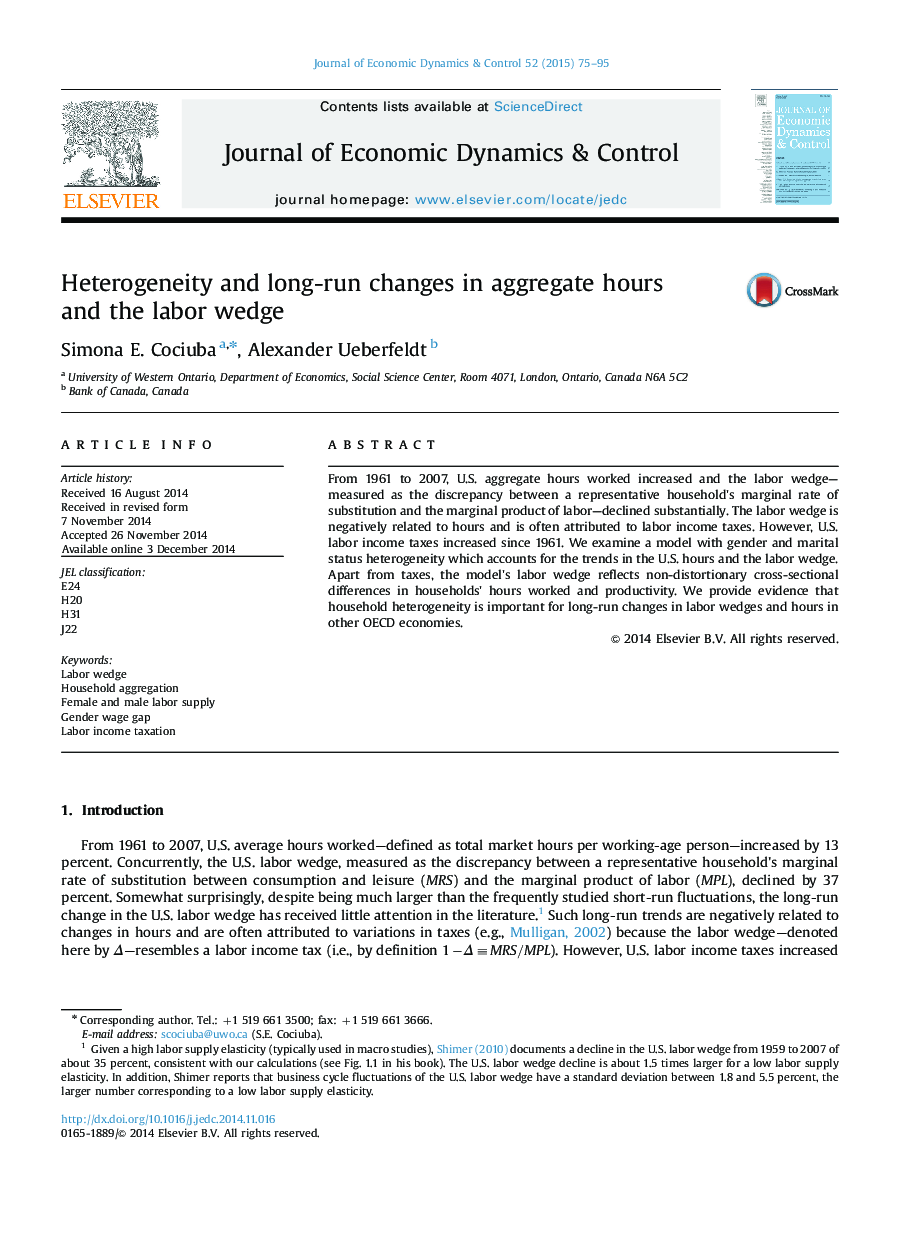| Article ID | Journal | Published Year | Pages | File Type |
|---|---|---|---|---|
| 5098331 | Journal of Economic Dynamics and Control | 2015 | 21 Pages |
Abstract
From 1961 to 2007, U.S. aggregate hours worked increased and the labor wedge-measured as the discrepancy between a representative household׳s marginal rate of substitution and the marginal product of labor-declined substantially. The labor wedge is negatively related to hours and is often attributed to labor income taxes. However, U.S. labor income taxes increased since 1961. We examine a model with gender and marital status heterogeneity which accounts for the trends in the U.S. hours and the labor wedge. Apart from taxes, the model׳s labor wedge reflects non-distortionary cross-sectional differences in households׳ hours worked and productivity. We provide evidence that household heterogeneity is important for long-run changes in labor wedges and hours in other OECD economies.
Related Topics
Physical Sciences and Engineering
Mathematics
Control and Optimization
Authors
Simona E. Cociuba, Alexander Ueberfeldt,
